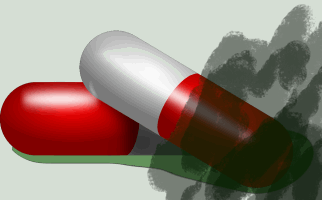Medication Overuse – How much is too much?
Last time we talked about some of the different perspectives when it comes to medication overuse headache, or rebound headache. In layman’s terms, rebound headache refers to headache symptoms that are eventually made worse by the very medication that you’re taking to fight the symptoms.
For example, have you ever tried a medication that seemed to work well the first time, but after a while it didn’t work as well? Or you had to take more for it to work? Or you find that you’re taking it more and more often?
That could be an indication that the medication is making things worse.
 The question of “how much is too much” is very controversial. However, one perspective is that “more” is too much. In other words, every time you take a medication for migraine symptoms, the body depends just a little more on that medication (that’s not a technical term in this case – the point is that taking any medication makes it more likely that you’ll need more in the future).
The question of “how much is too much” is very controversial. However, one perspective is that “more” is too much. In other words, every time you take a medication for migraine symptoms, the body depends just a little more on that medication (that’s not a technical term in this case – the point is that taking any medication makes it more likely that you’ll need more in the future).
Why may this perspective be helpful? Because instead of trying to take one less pill than some arbitrary measure (“only two per week”, for example, or “whatever my insurance company allows”), you’re aiming to take as little as possible. And this may, in the long term, pay off big time.
There are various approaches to “taking less”. Stopping cold-turkey (which sometimes requires “detox” at the hospital), stopping little by little. But in most cases, you’ll have to substitute something else – either a non-drug treatment (and there are many great options), and/or medication that is less likely to lead to rebound.
We’ll talk more about this concept. But in the mean time, consider changing your perspective a little. Don’t rely on your insurance company or doctor to decide how much is too much. Aim for less – or none. Even if you’re taking a little less this month than last month, that gradual decrease may mean huge improvements down the road.
